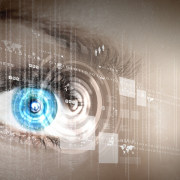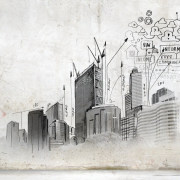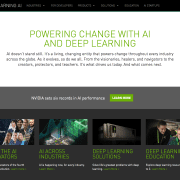[Cybernews Interview] “It is hard to name an industry that would not benefit greatly from video analytics solutions”
While some doubt the necessity of video surveillance when it comes to physical security, experts emphasize that it’s better to be safe than sorry.
It goes without saying that even simply having a CCTV camera installed can scare off a considerable number of potential intruders. But with AI-powered analytics, surveillance solutions can offer so much more.
Today, AI-powered surveillance cameras can complete advanced analytical operations and ensure proactive protection by analyzing video data and comparing it with the information provided by other security sensors.
To explore this topic further, the Cybernews team contacted Brent Boekestein, CEO of Vintra – a company that provides AI-powered video analytics solutions. Brent explains what security challenges can be solved by AI surveillance.
Let’s go back to the very beginning of Vintra. What has the journey been like over the years?
Vintra was founded in 2016 by me (Brent Boekestein) and two leading computer vision experts, Dr. Ariel Amato and Dr. Angel Sappa with one goal: to create safer communities, companies, and organizations through deep learning-powered solutions.
Over the past several years, Vintra has been building its own deep learning platform and training its algorithms using real-world video data sets to create a solution accustomed to what today’s real-world cameras capture.
Where many companies in artificial intelligence simply re-train or fine-tune existing algorithms as the foundation for their solutions, our research scientists have crafted their solution from the ground up, resulting in a platform that is both faster and more accurate than anything else on the market today.
Today, Vintra structures previously unstructured video from live cameras and recorded clips to make that data monitorable and searchable with industry-leading accuracy, speed, and cost-efficiency in a way previously unobtainable by human operators.
Vintra also endeavors to ensure that its algorithms are developed ethically in regards to data bias and undergo continuous internal review to identify and correct potential issues before being pushed to production.
We’re proud to work closely with 3 out of the Fortune 10 and we strive to continue improving our detection and classification model to ensure that we are serving the needs of security practitioners around the globe. As a result, we’re helping create safer spaces for everyone while still respecting individual privacy and promoting sensible federal regulations.
Can you introduce us to your video analytics solutions? What are the main issues they help solve?
Vintra Fortify makes existing security cameras and video management systems smarter. It ingests live or recorded video from fixed or mobile security cameras – including dashboard systems, body-worn cameras, and drones – and then uses purpose-built machine learning algorithms to detect and alert accurately for critical events like intrusions or anomalies. It can re-identify any person or vehicle across all cameras in real-time, reduce video search time by 80% for post-event investigation, and provide robust case management.
Beyond dramatically streamlining security efforts and creating a safer overall working environment, one of the more exciting use cases now trending is the ability to capitalize on the vast amount of granular data coming from surveillance cameras to address objectives beyond security. With so much metadata being processed by an organization’s camera infrastructure, there is a great opportunity to access, process, and parse that data in insightful ways.
Our Vintra BI module enables users to tap into the power of machine learning, leveraging their video analytics metadata for valuable insights on a range of use cases – for example, identifying potential compliance liabilities so that they can be remediated before incidents occur. Facilities teams can also get visibility into space utilization, traffic flow, and density to understand when, where, and how their physical environments are being used, helping to inform intelligent growth planning. Analytics can help with vendor management as well, ensuring that maintenance contracts are being fulfilled per the contractual agreement.
The insights from these and many other use cases can be shared with key stakeholders in other parts of the organization, such as real estate planning, HR, and more, helping to optimize business operations across the enterprise. The significant value delivered by our analytics solution can help to move the conversation from ROI to ROSI (Return on Security Investment) within the C-suite.
Which industries would greatly benefit from installing video analytics solutions?
I would be hard-pressed to name an industry that would not benefit greatly from video analytics solutions. While each industry has its own pain points and struggles, everyone has a need for security and to optimize operations.
If we could spend ten minutes talking with a subject-matter expert from any industry, there’s no doubt that there would be ideas and information that would emerge to inform this conversation. While the first industries that come to mind are those that are the biggest users of physical security solutions – healthcare, enterprise, education, critical infrastructure, public safety, etc., our analytics could provide immense value for many others.
For example, in a factory setting, they could help optimize process management; in a large retail complex they could inform space planning and traffic management – there are endless other applications.
How did the recent global events affect your field of work? Did you add any new features as a result?
One interesting aspect of the physical security space is that its needs and use cases remain consistent, regardless of timing or global events. Our industry is recession-proof, pandemic-proof, and not even affected by countries at war. While we have not specifically updated any features in our product in response to current events, we are constantly updating our solution and platform to stay one step ahead of today’s security challenges.
Besides video analytics, what other security measures do you think are essential for any company nowadays?
Organizations in both the public and private sectors can benefit greatly from the use of mobile video. Moving video footage gathered from body-worn cameras, dash cams and drones effectively expands a surveillance perimeter beyond locations where stationary cameras are present. The use of mobile video evidence has big implications when it comes to security, safety, and liability. These implications are made even bigger when you add in the fact that our analytics uniquely extend to mobile video. The combination of mobile video and video analytics offers organizations a new way of approaching physical security.
Additionally, organizations should recognize the visibility of not only their physical configuration but also the manner in which they operate. Social media has created a new level of transparency that can shine a light on many aspects of business and executive behavior. It is more important than ever to prevent liability and exposure to risk simply by adhering to best practices in areas such as hiring, personnel management, health and safety, and other key areas of focus.
Talking about average individuals, what tips would you give to those looking to secure their homes and networks?
As we focus on the enterprise space, our customers are very interested in the balance between security and privacy. Smart solutions such as ours feature the ability to turn off facial recognition, which allows an organization to protect the PII (Personally Identifiable Information) of their employees while protecting their people, places, and things.
Whenever possible, people should make a protection plan that adheres to the principles of Crime Prevention Through Environmental Design (CPTED), an established approach to deterring criminal behavior that focuses on changing how locations are laid out, and how they look and feel. CPTED provides a wide range of guidelines for landscaping, lighting, windows, fences, and other physical elements of facilities that, when properly designed, can help deter crime.
What predictions do you have for the future of AI technology?
The future will focus on applying deep reasoning systems to the growing mass of machine learning-produced metadata captured by video sources, to work alongside human operators and make decisions faster. Here are my top predictions:
ML metadata generation will remain critical. To extract more information from videos, flexible model architectures will make it easier to add new detection categories quickly and accurately. Our ML team is constantly improving their ML model architecture and enriching training and validation datasets to ensure optimal platform performance.
Pattern recognition will move from science fiction to real science. Future technologies will identify — over long time frames of video footage with millions of detections — the people that interact with a particular person of interest, where and when they meet, and with what objects they interact, as well as identifying additional people with whom they’ve met. This “pattern of life” discovery helps security teams paint a more holistic security picture.
A smarter system will know when and what to show you: Future systems will show only the camera feeds on which you need to focus at that moment in time. AI-powered video analytics will not need to define any rule or condition; the system will present to the user only the things that matter.
Contextual awareness will be key: AI-powered video analytics solutions will have a new level of contextual awareness – knowing the difference between a parking garage, lobby, or elevator, for example – improving situational awareness to an entirely new level.
What other aspects of our lives do you hope to see enhanced by technology in the near future?
I think we are just starting to scratch the surface when it comes to AI-powered analytics. We’re incredibly focused on empowering physical security teams with a more robust toolset to safeguard their facilities and their people, and we’re proud of the work our Vintra Fortify solution is doing in that regard. But everywhere you look, the ability to leverage machine learning to automate, simplify and force multiply specific efforts and activities will be fun and interesting to watch evolve over time – and we’re excited to be at the heart of this movement.
Would you like to share what’s next for Vintra?
There are two key things on the horizon that should be mentioned:
- The proliferation and digitization of physical security infrastructure over the past few years mean security teams now oversee an increasingly valuable organizational asset: granular data coming off cameras and access control readers.
Forward-thinking organizations have dedicated software developers on the security team that take data generated by the security infrastructure and feed it, via APIs, to other parts of the organization. This happens through business intelligence tools or directly into the applications those other departments use like HR software or real estate space planning software.
- Now more than ever, edge video solutions, such as smart cameras, are gaining serious traction in the enterprise. This trend is called “the multiple edges” because the most forward-thinking customers are looking at how to combine the Enterprise, Device, and Sensor Edges into a mesh network of powerful computing that can address both post-event and real-time applications specifically for their security environment.
For 2022, the benefits of this multiple-edges approach are quickly coming into focus. Broadly speaking, these benefits include reduced latency and increased speed, enhanced security, cost savings, remote reliability, rapid scalability, ease of procurement and swarm intelligence potential. The future of forward-thinking physical security and safety will have many edges, a “smart VMS” and many related benefits. It will broaden the security capabilities of an enterprise while also driving down latency and the total cost of ownership.
You can read the entire article here.









